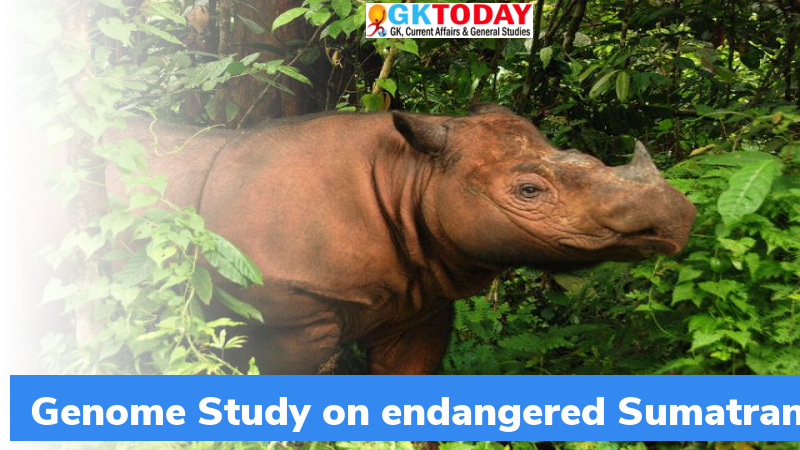Genome Study on Endangered Sumatran rhinoceros
The researchers at the Centre for Palaeogenetics, Stockholm showed that the populations of Sumatran Rhinoceros displayed low levels of inbreeding.
About the Genome Study
- In order to investigate their inbreeding levels, the researchers had sequenced the genomes from 16 rhinos on Sumatra and Borneo. The findings that the rhinos are facing low levels of inbreeding was based on this genome sequencing.
- Currently, the rhinos in Sumatra and Borneo are facing high genetic diversity and low inbreeding levels. The low inbreeding levels are due to small population size.
- The researchers found that the frequency of potentially harmful mutations was high. This means that closely related parents produced offspring that suffer from genetic diseases.
- The researchers will now study the sequenced genome to estimate their inbreeding levels, frequency of potentially harmful mutations and genetic variations.
- According to the researchers, the future study will reveal about potentially harmful mutations hidden in the genomes of these rhinos.
Solution
The researchers suggest that the only solution to the problem of extinction faced by the rhinos is to increase their population size. Also, the genes of Sumatran Rhinos and the Borneo rhinos should be exchanged.
Rhinos
- The IUCN classifies Sumatran and Borneo rhinos as Critically Endangered.
- World Wild Life Funds: There are only eighty Rhinos left in Sumatra and Borneo
- Five Different Species of Rhinos: Black Rhino, Greater One-Horned Rhino, Sumatran Rhino and Javan Rhino. They are spread across India, Bhutan, Nepal, Malaysia and Indonesia and thus these countries are called Asian Rhino Range countries
- Of the five species, only Great One-horned rhino is found in India.
- Greater One Horned Rhino has been placed under “Vulnerable” category in IUCN Red list of Threatened species.
Month: Current Affairs - April, 2021


